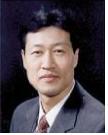#39

My dear brothers and sisters, Who doesn’t like a mystery! Especially when an exciting event unfolds into a revelation previously unknown. A biblical mystery is what?—something God kept secret for ages, now revealed to his people”– Col. 1:26-27. He kept it secret until people were ready for it—“the fullness of time.” Three mysteries are before us:
The mystery of life, death, and life again—The Resurrection The mystery of God in Christ and history—The Incarnation The mystery of Christ in you and the Church—The Infusion
Mystery # 1: The Resurrection – Job’s issue—If a man dies, will he live again? Both he and Lazarus’ sister, Mary (and myriads of people since) saw in the fog-shrouded distance something happening after death. But what? A general event of some kind—After my skin has been destroyed, in my flesh I will see God…. I know he (Lazarus) will rise again in the resurrection at the last day – Job 14; 19 & Jn. 11.
Jesus’ resurrection dispelled the fog, and his assuring words to Martha brought the distant future into the present: He who believes in me will live, even though he dies; and whoever lives and believes in me will never die – Jn 11:25. “He will live even though he dies,” is how we see at the cemetery. But we can’t understand “he will never die” until we see this is how God sees it. The believer lived, then was taken to paradise, as was the thief, to await the resurrection of the body. This will happen upon the return of Christ, “the firstfruit of the resurrection,” – I Cor 15:20. The purpose of this revealed mystery is to assure us of a seamless life after life.●
COMMENTS
in relation to Mystery # 1: The Resurrection THREE GREAT MYSTERIES WITH A PURPOSE
 Vernon F. Holstad, USA, wrote;
Vernon F. Holstad, USA, wrote;
Can the Author do it alone?: Can the one who wrote the book entitled Can the pastor do it alone? to aid in developing a lay pastoring ministry — can he do it alone? And, does the Body in the local church need the larger Body? What began rather modestly in Cincinnati less than two decades ago address both of these questions. It had a rather unpretentious origin — the development of a lay pastoring ministry at College Hill Presbyterian Church by Dr. Mel Steinbron that has now expanded into international proportions. As a vision that lay people grew in Mel’s heart, he proved it by developing a working strategy for equipping lay people to pastor. As pastor and lay people from other churches learned of the developing lay pastoring ministry in College Hill, they began to beat a path to the door requesting assistance and training for their lay pastors ministry. A better “mousetrap” had been discovered! Such a critical need was being addressed that in 1986 Regal Books asked Dr.Steinbron to write a book. It was published under the title, Can the Pastor Do It Alone?
Modest beginning! Good news, however, cannot be contained! There a growing awareness that other churches needed to learn from the model of lay pastoring at College Hill, and this pioneering church desired to learn from other churches as well. Thus, the first Consultation on Lay Pastoring was held in Cincinnati in 1984 with about 25 attending. the pastor could not do it alone!
Just as a taste of the goodness of Christ causes a hunger for more (Phil. 3:10), the first Consultation created a desire for more help in lay pastor equipping and resources. Four successive Consultations indicated that we not only needed to learn from Mel Steinbron but many others had experience and wisdom to share as well. God seemed to be unleashing the laity for ministry — the theme of the 1989 Consultation. The goals of the consultation were stated in only three works — To know, Grow and Glow, but encompassed far-reaching objectives for pastors and lay people alike. It was obvious the pastor could not do it alone!
But could the author do it alone? Was this only a private vision by a man, Mel Steinbron? And what about the churches. Are spirituals gifts exercised toward the whole church and do we — should we –expect of any kind of relationship with or commitment to each other as churches? Within less than half a decade, the vision of providing equipping and support to other churches by Mel and begun to be shared and owned by others. A Consultation Planning Task Force worked along with Mel to plan each successive consultation. After all, could the author do it alone?
And, although it has not included a subscription fee or formal covenant agreement, a number of pastors and churches by their interest, participation and vision for lay pastoring have become a part of an informal lay pastoring network. Not only does the quarterly “Network News” edited by Mel provide invaluable resources ideas, information and training, it tends to united and bind us in common bonds of labor for Christ.
But to quote Mel’s quote of someone else (a good reason to question this writer’s editorial credentials!), “What do you do with a baby elephant?” Answer — “Let it grow up!” Thus the Lay Pastors’ Ministry Network is growing from infancy toward adolescence.
That which at one time was primarily a consultation in which participant basically conferred with each other has now become a conference because we have something to offer: vision, experience, equipping. From the eight workshops in the first Consultation, we expanded to included twenty-two equipping seminars of very high quality in the 1990 Conference.
But, can the author do it alone? Can a Body (individual church) do it alone? Additional growing steps (and pains?) were taken at Montgomery last spring when a Network Leadership Team was formed to stand with Mel, share his vision and assume leadership responsibilities. Although steps were a little tenuous and cautious, a mission statement was adopted, and a Network Leadership Team of 15 members was proposed, with a steering committee appointed to begin plans for the 1991 International Conference to be held in Grand Rapids. Old men are dreaming dreams; younger men are developing a vision; and both men and women are sensing the Spirit’s presence.
There is a growing conviction that God is in the Lay Pastors’ Ministry Network and that it is greater than any one of us or all of us combined. Where will the Lay Pastors Ministry Network go from here? Only God knows for certain. But, answers to our earlier questions have been somewhat illuminated. Can the author do it alone? Does a Body (local church) need the Body. What do you think?
(Vernon F. Holstad), Network Co-Coordinator

Byeong, Melvin University, says:
How do you think of resurrection? How did you preach or heard it well?
Re-equipping: Also we need to talk about reequipping. What it is? Pre-study and basic. Equipping training is important just like once we come into the army for basic training, we. Koreans compulsory to join there for three years, so they are trained for a few months as a basic level which is basic philosophy, knowledge and skills. But after basic training at National Training Camp, they move into their unit which they stay permanently until they finish three years. When they jump into new camp, real life of the army they are very afraid of it, because they never had that experience before, so army train again, we call re-training time and time for next three years, why? That’s the real field. No more game play.
Just like that, reequipping for lay pastors is important. Actually reequipping is uncomfortable to the pastors, because they have put all of their energy at beginning stage which means to put everything in the startup, so they think they have done their job very well, and even reequipping is not their job they think.
And they think, they have done for startup the ministry, so next job is to be given to the lay pastors themselves and they have to develop, to creative for the keep on going. But that is not true and reality is not like that. Laypeople couldn’t manage reequipping by themselves, and that’s why Dr. Melvin developed reequipping materials; 2 Monograph, Dynamite Meeting, Essay, and ‘Letter to Lay Pastors.’
These materials are good for lay pastoring, but how about pastor’s side, I mean senior pastor of LPM churches. They are responsible for this ministry, I mean reequipping. Because lay pastors need this extra training and also they want to grow through and in this ministry. After three months of launched mostly they feel to know more about many things, but exactly two areas I found, for instance; Bible knowledge and psychology and more skills on real ministry means they face problems when they doing this ministry now. Then they have heard from teacher that some problem will come to and of course there is some reequipping materials but they didn’t have real experience3 about those teacher’s teachings, now they are in the right place. Of course they don’t have to quit there but needs to get experience through. So pastor need to familiar with those ready-made to use of three or four Melvin’s equipping materials and better be creative more and more and they can use materials where in their own book shelf.■
ADDITIONAL COMMENT
by BYEONG
Experience of failure in the early life: There are two categories of leadership books. One is how successful people [in business] succeeded in the business world! The other is books about self-help, written by people who have overcome difficulties and failures in their early personal lives. As we know, the former are successful people in the successful business world, and they are such as 100 people and 50 people in the FORTUNE magazine. For example, Steve Jobs, Bill Gate, etc.
I found that the former are books about how to lead the entire organization, business, and the latter are about the growth of individual leaders. But I found one peculiar thing in latter books of leadership. It is that people who failed in their childhood or youth wrote books. Not everyone has, but most have had failed experiences. There have been various kinds of failures. There used to be people who had experienced homelessness, and people who had experienced rough work by the pier. In the meantime, some people would visit the library during their breaks and read a biography of the world’s famous people there. And they were inspired by them, how they succeeded. In the meantime, they not only succeeded, but also wrote many books about ‘self-development’. So I enjoy reading such books. Because books about self-improvement really help ourselves. I think we grow ourselves through these books. It is important to grow on your own. I’m not talking about making a lot of money here, getting richer in the world.
In other words, failure became a medicine in their youth. There is no need to invite fails, but I think the more important thing is how to act and cope with such a thing when it comes. The former books – successful people in business – teach us the knowledge and skills of success, but the latter books impress us. The former shows how to make money, while the latter shows how to live wisely. So I think we can once again revive ourselves through these books called self-improvement.
Do we need to put the name to those who failed in their youth as failures? There is a saying that “sprout leaves are recognized from an early age,” but I think there are many cases. There are cases where they are born as a genius and become normal, and they are born as normal, but they do big things later, or their head opens up later.
These days, I see many young people who making many failures. But, rather, they need encouragement! They’ve already had enough painful experiences, and they were trying again and again. I don’t think we need to hurt them again as older people like me. They also think enough, and will find solutions. As we know, it’s just a lack of experience in their life, so I think they’ll be solved over time.

각기 다른 필요성
우리의 평신도목회(Lay Pastors Ministry)를 하고 있는, 그리고 받아들이는 나라가 여러군데 있지만 대표적으로 네 나라를 예로들어 그 이유를 얘기해보려한다.
우선 [미국에서는] 한 교회에 너무 많은 성도가 있었다. 물론 작은 교회들도 있었다. 멜빈목사님이 이 사역을 개발하고 발전시켰을 때 그 교회 성도들은 약 2,000명이 넘었다. 그래서 개인적인, 즉 일대일의 돌봄이 필요했지만, 전통적인 교회 시스템으로는 불가능했다(담임목사와 부목사들이 돌보는 시스템). 그리고 대부분 미국교회들이 다른 나라들처럼 30~40년 동안 오직 전도에만 초점을 맞추었기 때문에 일단 교회에 들어와 정착하면 관심을 덜 두는 게 사실이었다. 게다가 그 당시에는 파라쳐치 운동이 꽃피울 때라 교회를 돕기 위해 많은 기관이 생겨났다. 그래서 멜빈목사님의 PACE사역(Lay Pastors Ministry)도 그중 하나였고, 많은 교회에서PACE사역에 만족하고 있어서 잘 되었다. 그리고 교회마다 이 사역을 좋아했다. 왜냐하면, 그것은 평신도들을 진지하게 생각하게 하였고, 일종의 평신도계발 운동이었기 때문이었다.
[한국에선] 교회역사가 100년이 다 되어갈 때 PACE사역이 들어왔다(1999년). 지난 100여 년 동안 그들은 전도를 포함한 많은 사역을 해왔다. 그래서 그들은 다음 단계가 무엇이고 어디에 있는지를 찾고 있는 터였다. 그래서 그들은 LPM/PACE에 맛을 봤을 때, 즉시 이해하고 받아들였다.한국교회가 교회성장에 PACE를 활용한 것은 1990년대 이후로 수적으로 줄어가고 있었고, 평신도도 목사도 현재의 교회상황에 더는 만족하지 못했기 때문이다. 그리고 평신도들은 자기 계발이 반쯤 된 상태라 완전히 성장하길 원했고, PACE는 그들을 성장하게 했고, 그러면서 이 사역에 만족하게 된 것이다.
인도의 [나가랜드는] 타인의 도움이 필요한 가난한 나라인데, 특히’피부로 느끼는 사랑’이 핵심개념인 PACE가 그들의 상황에 맞았다. 그리고 그들은 과거에 거의1 00년 동안 평신도목회/사역에 대해 들어본 적이 없다. 그들의 기독교 역사는 한국과 거의 비슷하다. 그래서 그들은 평신도사역을 전혀 생각하지 않았고 평신도들에 대해서도 진지하지 생각하지 않았다. 소위 말하는 3P만 하는 것이었다: Presence, Prayer, Pay(교회에 와서, 기도하고, 헌금 내는 것). 그들은 목사의 목회에만 집중했고, 교단이 개 교회까지 관할하는 시스템이었다. 교단 본부가 개 교회와 목회자를 통제하고 있어 100년 동안 강력한 위계질서를 가진 곳이고, 또한 교회개척도 자유롭게 못 하는 분위기이다. 나로부터 LPM (Lay Pastors Ministry)과, PACE사역에 대해 듣고는 많이 놀란 표정들이었으며, 대부분 나에게 감사하다고 했으며, 새로운 패러다임에 눈을 뜨고 그것이 성경적임을 믿고 그대로 받아들였다. 그들에게 그것은 정말로 제2의 종교개혁이 될 것이기 때문에, 현재의 PACE신학교(PACE International Seminary, 디마풀 소재, 2015년 설립)는 미래의 나가랜드 교회들에 이러한 운동과 또 유익을 줄 수 있는 중요한 역할을 하고있다.
여기 [케냐에서는] 일전에 교실에서 학생들에게 특강으로 평신도목회에 대해 얘기를 했다. 그런데 상당히 어려움을 발견했다. 명색이 신학생들인데 한국교회의 평신도들 보다도 못한 것을 발견했다. 물론 그들의 잘못이 아니었다. 케냐의 교회들이 아직 그런 것에 익숙하지 않았고, 신학교에서 수십 년간 안 다루어왔기에, 또한 가르칠 수 있는 교수진들이 없었기 때문이라고 생각된다. 교회들의 수준은 그 나라의 경제수준과도 정비례한다고도 볼 수 있겠다. 좀 더 얘기한다면 케냐교회의 현실, 즉 수준을 보면 주로 오순절 교단 >오순절목사>오순절교회 >오순절 평신도, 이런 분위기로 가다 보니 교회에서 체계적인 교육. 훈련. 성경공부보다는 “기도만 하면 다 된다”는 식으로, 심지어는 목사가 되는 것도 기도 많이 하고 뜨겁게 봉사하는 사람이면 안수받고 목회할 수 있다는 생각들이 편만 해져있는 것 같다. 이제사 정부에서 무신학의 목사들에 대해 염려한 가운데, 인가 난 신학교/신학대학에 가서 학위 받고, 정부 허락받고, 즉 설교자격을 정부에서 주겠다는 것이다. 그래서 제대로 안수받고 목회하라는 정책을 세워 목회자들을 재정비시키는 작업을 하고 있다. 물론 “정부가 교회에 너무 깊이 관여한다”는 반발도 생기는 것은 사실이다. 어쨌든 교회들의 현실이 이렇다 보니, 목회자들이 평신도들에 대해 심각하게 생각해볼 겨를이 없었다. 마치 몇십 년 전 한국교회의 목회자들과 같았다. 심하게 말하면 평신도는 활용의 대상 정도로 여겨 왔던 것이다.
내가 학생들에게 평신도들을 목회에서 동역자로 받아들이는가?라는 질문을 던졌는데, 내가 무슨 말 하는지 그 내용 자체를 이해 못 하는 분위기였다. 마치 한국의 6~70년대 교회 같았다. 한국에서 사역할 당시 20여 년 전만 해도 “평신도를 목회의 동역자로 받아들이는가?” 라는 질문에 의아해한 목회자들이 많았다. 지금은 그런 문제는 다 해결되었다고 본다. 우선 시대가 많이 변해서 평신도들의 수준이 높아진 것이고, 또 다른 하나는 현실적인 목회가 평신도들 없이는 불가능하다는 생각들이 목회자들 개개인에게 피부로 와 닿는 이슈가 되었기 때문이다. 그래서 미국에서도 Partners in Ministry (제임스 갈로우 지음 )라는 책이 유명해진 이유이기도 했다. 아프리카 교회들은 시간이 걸릴 것 같다. 위에 언급한 두 가지 이유에서이다. 평신도들의 수준이 높아져야 하고, 평신도에 대한 목회자들의 의식이 바뀌어야 할 것이다. 한국이 2~30년 걸렸던 것처럼 여기 케냐의 교회들도 그럴 것이다.●
